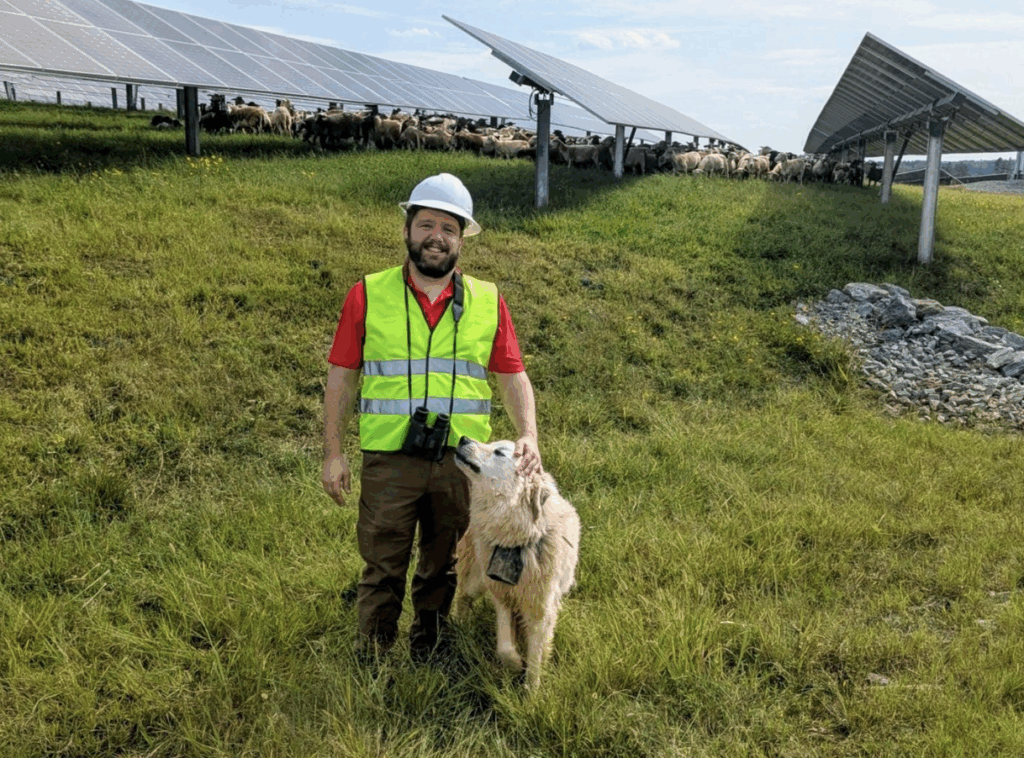
Bridging Energy and Agriculture: A Visit to the Crystal Hill Solar Grazing Site
This month, CCE had the opportunity to participate in a solar grazing management training hosted by the American Solar Grazing Association (ASGA), followed by a tour of a working solar grazing site at the Crystal Hill Solar Farm in Halifax County, Virginia.
This hands-on experience showcased a promising model that’s gaining traction across the Southeast: solar grazing is the practice of using livestock, primarily sheep, to maintain vegetation under and around solar arrays.
What makes solar grazing worth paying attention to? It’s a win-win for rural economies and energy producers alike. This approach reduces maintenance costs for solar operators while providing local farmers with new sources of income and land access. Instead of replacing farmland, solar grazing enhances it, allowing land to stay productive in multiple ways.
“This is an additive, not subtractive, model,” said one Thomas Shumaker. “We’re not choosing between energy and agriculture, we’re strengthening both.”
Across the South, where agriculture is central to both economic and cultural identity, solar grazing is proving to be a practical solution that aligns with conservative values:
- Free-market innovation: Farmers contract directly with energy companies to provide grazing services.
- Rural economic development: Solar grazing creates secondary revenue streams for small and mid-sized farms.
- Energy infrastructure reliability: Managed vegetation supports panel efficiency and reduces fire risk or equipment strain.
- Land efficiency: Grazing reduces the need for chemical herbicides or heavy mowing equipment.
With more large-scale solar projects being built on former farmland or open rural landscapes, this model offers a path forward that respects property rights, supports local agriculture, and improves grid resilience, all without new mandates or subsidies.
You can learn more about the American Solar Grazing Association and their work at www.solargrazing.org.
